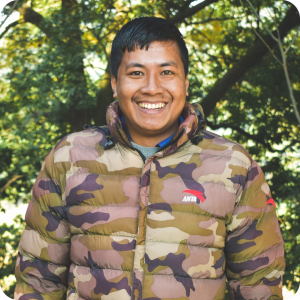Makar Sankranti is celebrated every January in India with great zeal and enthusiasm. The festival marks the end of winter and the onset of a new harvest season and it is dedicated to the Sun God, Surya. This festival is also celebrated in other Asian countries and is called Shakrain in Bangladesh, Maghe Sankranti in Nepal, and Songkran in Thailand.
The Myth of Sankranti
According to ancient Hindu mythology, the winter solstice symbolizes the Night of the Gods; a sign of darkness and negativity. Its opposite, the summer solstice, symbolizes the Day of the Gods and is considered to be very holy. In essence, Makar Sankranti, celebrates the end of an unfavorable phase and beginning of an auspicious one.
The Hindu almanac, Panchaang, deems Sankranti as a deity. According to a legend, the deity Sankranti killed a devil called Sankarasur on the day of Makar Sankranti. Another story recounts how, on this day, Lord Vishnu killed the Demons who were wreaking terror and buried them under the Mandara mountain. Both legends convey the powerful message of victory of good over evil.
While Makar Sankranti is celebrated with great pomp and splendor on a pan-Indian level, every state has a different name and celebration practices for the festival. The myriad names and localized rituals that define Makar Sankranti are a reflection of India’s cultural diversity.
In India – A celebration centered around altruism
Hindus across India start the auspicious day of Makar Sankranti by bathing in the river at sunrise and offering prayers to Lord Surya as an expression of gratitude for his blessings. Later in the day, people offer freshly harvested food grains to the Almighty to celebrate the beginning of a new harvest season. On this pious day Hindus also engage in charitable and altruistic activities such as donating warm clothes, blankets, food, and utensils to the poor. Delicious sweets made from Sesame seeds (Til) and Jaggery (Gud) are prepared and shared with family and friends as a symbol of unity. Besides, social events like fairs, bonfires and kite-flying competitions enhance the festivities.

Food is a major highlight of Makar Sankranti, and each region specializes in unique dessert platters to celebrate the festival. For example, Tilkut is prepared in Bihar, Gulachi Poli and Murmura Chikki in Maharashtra, Patishapta and Pulipitha in West Bengal, Tik Chikki in Gujrat, Pheni in Rajasthan, Revari and Pinni in Punjab, Makara Chaula in Odisha, Til Pitha in Assam. All the sweets are prepared using Til or Sesame seeds and Gud (jaggery) as their primary ingredients.
Explaining the reason behind making sweets from sesame seeds and jaggery, Mr Satyendra Prasad, our Kitchen Garden In-charge in Bihar, says “Makar Sankranti marks the transition from winter to spring. The fluctuations in atmospheric temperature from cold to lukewarm around this time make us susceptible to body imbalances. Til and Gud keep our body warm and boost our immunity levels, preventing us from catching cold during the season change. That is why those ingredients are mandatorily used for making various desserts on Makar Sankranti. In Bihar we make lip-smacking sweets !”
In Nepal – to each community its tradition
In Nepal, Mahe Sankranti marks the coldest day of winter and promotes family and community bonding along with yummy foods. On this day, people take a bath in holy rivers – just as in India – and offer prayers to the gods. Mostly celebrated by the Hindus, the format of the celebration varies depending upon the ethnic communities within the country.
The Newar community of the Kathmandu valley observes this festival as “Ghyo Chaku Sallhu”. Older people, especially mothers, rub mustard oil onto the heads of younger members of the community. and everyone spends the day basking in the sun. The usual delicacies consumed on this day are ghee (purified butter), Chaku (hardened molasses), and sesame sweets.

The Magar community celebrates the memory of their ancestors by offering “khichadi” as a sign of respect and prayers in the river early in the morning. Another tradition carried out a few days before the festival is the collection of kandamuls (vegetables that grow underground). “I still remember collecting kandamuls with friends when I was young. I’m not a good dancer, but in the communal gatherings, everybody dances so nobody feels conscious and enjoys very much”, shared Mr. Indra Sinjali, Program Officer at Karuna-Shechen.
In the Rajput community in Terai region the bond between parents and their sons are celebrated. They believe that receiving a sesame seed from someone’s hand makes the recipient indebted to the donor and the parents place sesame seeds and rice in their son’s hand five times as a promise that he will take care of them in their old age. “My wife still practices this tradition every year even though we are living in Kathmandu”, shared Mr. Birendra Singh, Admin Officer at Karuna-Shechen.
